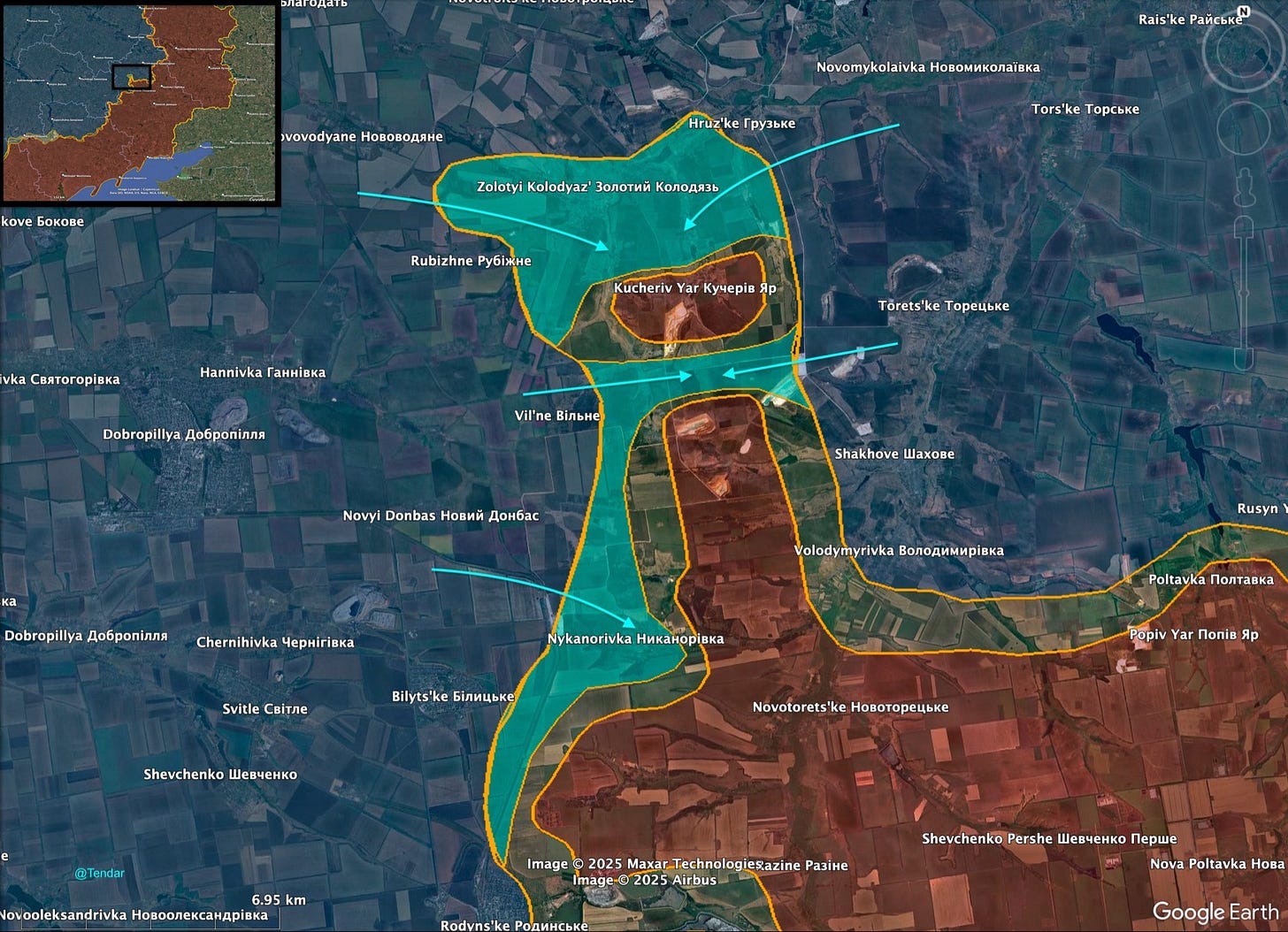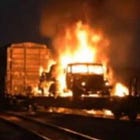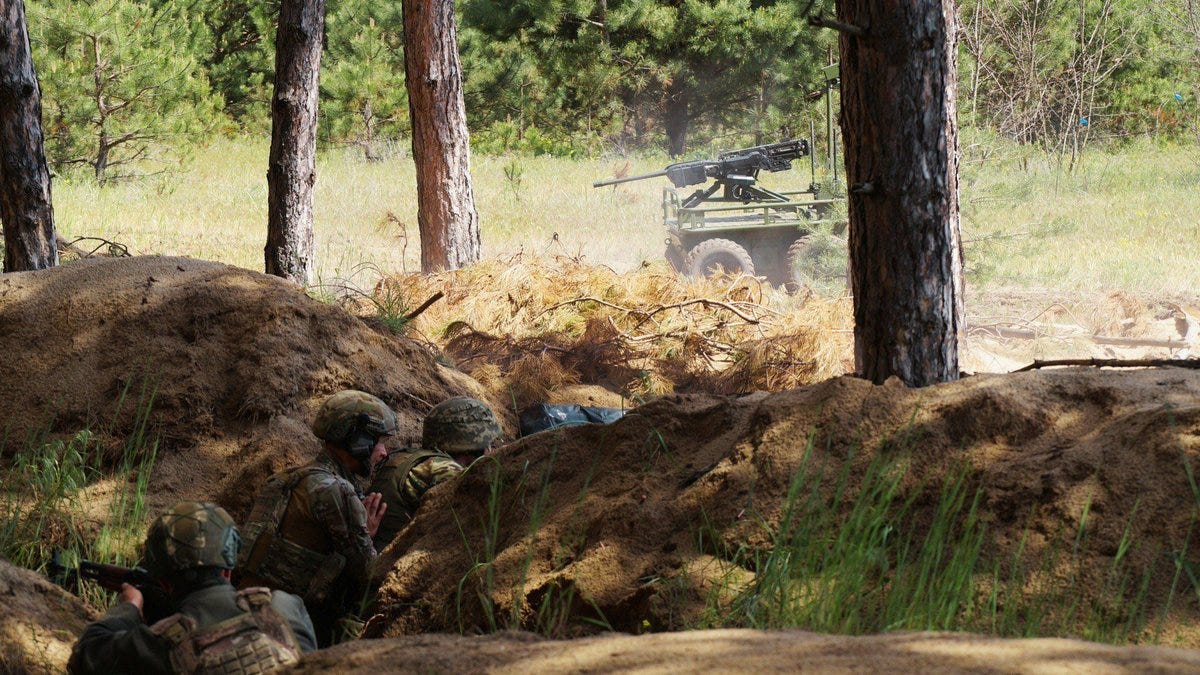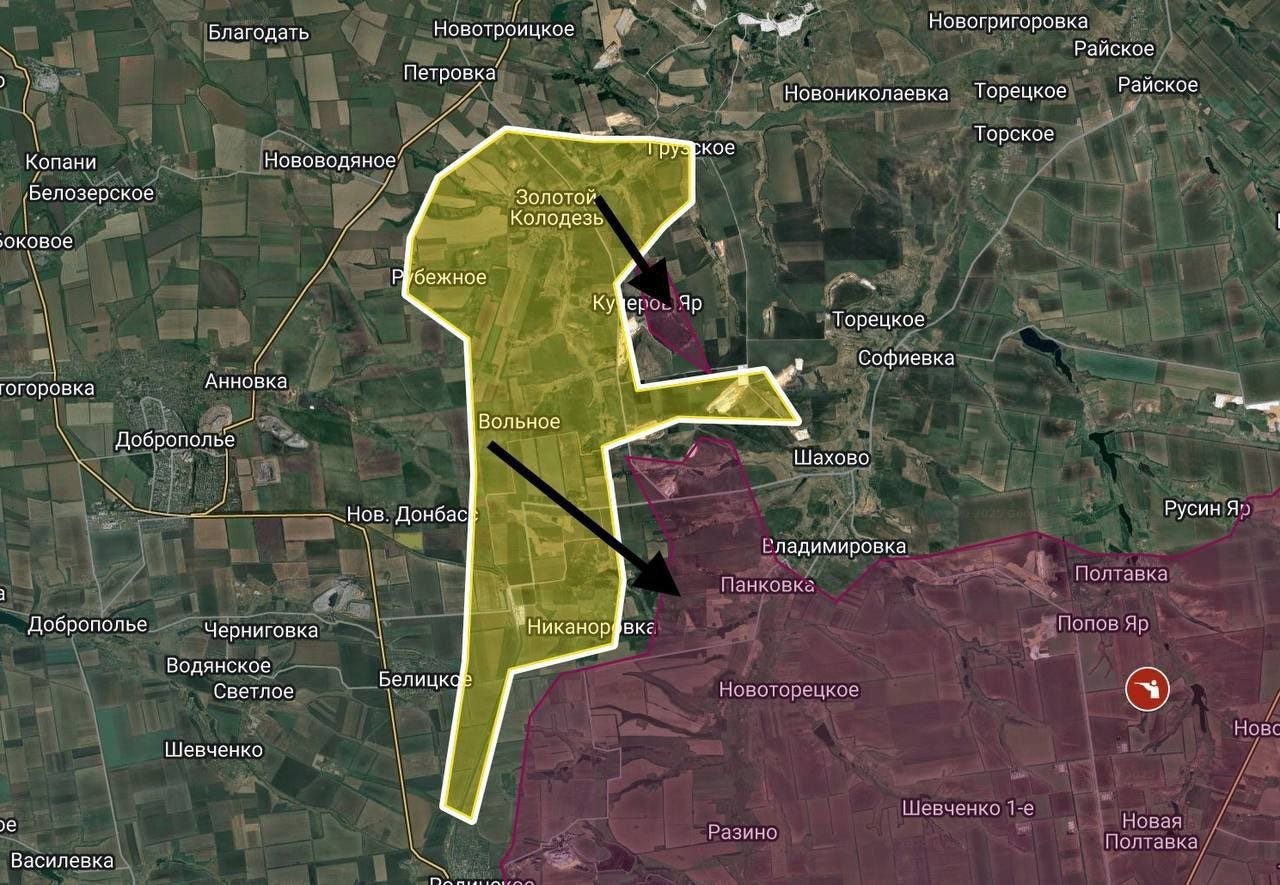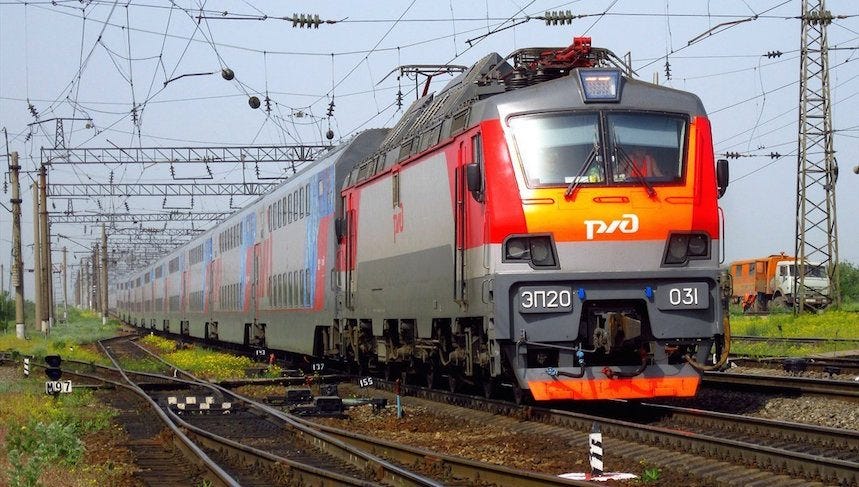Pokrovsk And The Gambler's Fallacy
A desperate offensive versus a desperate, but determined, defense
Timed to coincide with the Alaska summit, Russia’s offensive east of Dobropillya sought to exploit a gap in Ukrainian anti-tank ditches on the New Donbass Line through a combination of infiltration tactics and rapid advances using motorcycles. The operation has transformed into a cauldron battle, with Russians cut off by a concentration of Ukrainian units, including the famed 1st Azov Corps.
This gamble would have made more strategic sense had it been directed west, to actually cut off Pokrovsk, which Russians have been trying to capture for the last 18 months at tremendous cost. But the vulnerability that Russian reconnaissance had found lay to the north, so the assault went north. Dangerous as the result was, Russia could not reinforce and resupply the forces in Kucheriv Yar before Ukraine reacted, and there was no objective so important in that direction as to warrant the expenditure of men and resources.
Vladimir Putin is a natural gambler. As long as he has a stake, he will wager it on unlikely outcomes, expecting that at some point, a jackpot win will justify the previous lost stakes. The Battle of Dobropillya has been a longshot gamble, one that appears to have failed. We may draw lessons from it, and the Ukrainians will, and so will the Russian armed forces, but not Putin. He never learns, he merely finds another stake to gamble.
Ukrainians were surprised, but reacted fast enough to contain the breakthrough. “The 93rd Kholodny Yar Brigade cleared and took control of the villages of Gruzke and Vesele near Dobropillya, where the Russians had recently made a breakthrough,” read a unit Telegram post on 15 August.
In what is likely to be the most telling sign of things to come, “ground-based robotic assault systems were used to liberate Ukrainian territories. Robots equipped with machine guns fired at enemy concentrations, approaching to practically point blank range.”
A video highlight reel shows glimpses of the unmanned ground vehicles (UGVs) attacking Russians in their hideouts about 7 miles (12 km) from the previous front line, or about the middle of the salient created by the Russian attack. Russian prisoners also appear in the video.
On Friday, a Facebook post from the Ukrainian Ministry of Defense claimed that “search and strike operations” had cleared the settlements of Gruzske, Rubizhne, Novovodyanye, Petrivka, Vesele, Zolotoy Kolodyaz, killing 271 Russians, wounding 101, and taking 13 prisoners.
More interesing perhaps was the vehicle count: just one tank, 2 armored vehicles, and “37 units of cars and motorcycles,” i.e. repurposed civilian vehicles. That is a ratio of twelve civilian vehicles to every military mover.
We have observed this trend developing in recent months as open source analysts say the vast pre-2022 armor stockpiles were beginning to run out and the Ukrainian ‘drone wall’ strategy began. Ukrainians have systematically focused on destroying Russian logistics within drone range of the front, producing roads full of wrecks and bodies.
As we noted back in May, the cost of a Chinese dirt bike is about the same as a small UAV (s-UAV). The war has turned into an economic contest of Ukrainian drones, air and ground, against Russian motorcycle troops. The Dobropillya salient is a preview of how this new mode of battle will look.
Any remaining Russian troops in the pocket will have to be resupplied by drones. Each side has targeted enemy drones and drone operators. Russians infiltrated drone teams into Pokrovsk and used drones to attack Ukrainian sensor networks. Russian fiber optic drones reached into the enemy ‘near rear’ in support of the advance.
The Institute for the Study of War “continues to assess that Russia's use of drone strikes to generate battlefield air interdiction (BAI) effects in the Ukrainian near rear is severely hindering Ukrainian evacuation efforts in the Pokrovsk-Dobropillya area,” they said on Sunday. In the usual way of battlefield adaptation, Ukraine will want to draw lessons from what Russia did, and apply them to future offensive actions.
Both sides have used extensive infiltration tactics during the war, primarily in the form of ‘sabotage and reconnaissance’ teams. While some Russian teams did make it all the way into Pokrovsk, and they did have an effect on Ukrainians during the attack, the tactic was only effective for a limited time. Like the pipeline infiltration operations that Russians tried at Bakhmut and Sudhza, this tactic has the appeal of deep surprise. However, as all three operations demonstrate, the survival rate is low.
Which brings us to the most amusing video to come out of the Pokrovsk-Dobropillya operation. Two elderly residents of the besieged city guided a Ukrainian s-UAV to the place where a Russian S&R soldier was hiding. The Russian gave himself away by shutting the door. On a serious note, this is a demonstration of why a defensive s-UAV ‘drone wall’ strategy makes perfect sense in Ukraine.
To be sure, Ukraine was forced to redeploy forces to answer the threat, including other notable units, such as the elite Birds of Magyar. There definitely was a weak spot covered only by sensors. However, stories of Russians moving past empty defense lines leave much to be desired in terms of information.
Were these unmanned defenses drone-protected? An open-top trench is no longer tenable in 2025. Without drone nets and bunker entrances designed to foil drones, a ‘defensive position’ becomes a kill zone. Every useless, dangerous trench left unmanned is a good thing, in this war, today. In fact, let the enemy have it, and then bring in the drone teams.
What the reader should take from all this, I believe, is that the drone war is the current military revolution. Everything going on at the tactical, operational, and strategic level has to be understood through the prism of the drone war. “Recent Russian advances northeast of Pokrovsk do not indicate that Russia can rapidly seize fortified or urban areas,” ISW reports.
“Russian forces took open areas without any significantly fortified settlements” and “still have not demonstrated any capability to rapidly seize large, fortified positions, however, as the campaigns for Kupyansk, Chasiv Yar, Toretsk, and Pokrovsk have shown.”
None of these many-months-long efforts to take Kupyansk, Chasiv Yar, Toretsk, and Pokrovsk have been at the scale needed to seize all of Ukraine's fortress belt — Ukraine's highly fortified, main defensive line in Donetsk Oblast that consists of cities that are significantly larger in terms of size and population. Russian efforts to seize the rest of Donetsk Oblast by force would take several years given the number of fortified urban areas Russian forces must overcome to reach the Donetsk Oblast administrative boundaries.
Russia does not have years. Russia does not even have one year. Russia might not even have six months before the money runs out and the bill for all of Putin’s war decisions comes due. This, again, entirely explains why he met Trump in Alaska, and why everyone in Washington seems so ebullient about peace in our time.
Not long ago, Putin’s defense industrial base was considered the world leader in UGVs. Today, it is hard to see Russian arms keeping up with Ukraine in the ground drone arms race. Russia lurched ahead in the fiber optic drone race, largely due to the economics of higher strike success rates. But this advantage is not going to last into 2026, because no advantage lasts more than six months in the drone war.
There was another breakthrough at Pokrovsk — a technological one. A Ukrainian with the elite Pryvyd sniper unit has set a new record for the longest confirmed kill at over 4,000 meters, or about 2.5 miles, reportedly killing two Russian soldiers.
The weapon was a 14.5mm Snipex Alligator rifle equipped with thermal imaging. Using an s-UAV as his observer, the sniper hit the target without direct line of sight, thanks to an assist from AI. “The standard dispersion of a B-32 14.5×114 mm cartridge at a distance of 1.5 km is 1×1 meter,” Defense Express reports. “At a distance of 4 km, even theoretically, several shots are needed to achieve the intended result.”
That’s amazing. Still: One shot, two kills? Really? Yes, really. “A 14.5 mm bullet with a core weighing over 63 grams can penetrate 20 mm of armor steel at 800 meters and is capable of piercing a wall at 4 km,” as seen in this video of the amazing shot.
The Kremlin has tried to catch up to the West and overcome the substantial ‘brain drain’ of talent with money, but Russian AI still lags behind. The most common descriptor is “unremarkable.”
Russia is of course capable of buying AI from China, but less capable of domestic AI production than Ukraine and its western partners. The longer the war continues, the more AI and drones will matter in the war, and the more Russia will struggle just to adapt.
Vladimir Putin is a gambler, but the ‘game’ is changing all the time. Ukraine has fought back every vector of his ‘summer offensive’ this year without manning continuous trench-lines for a thousand miles. Russian forces have innovated and adapted, but always at maximum cost in casualties.
Putin solved his manpower crisis with a cash infusion, but now the signup bonuses are starting to decline in many regions. With the money-printer now whirring along, and the Central Bank no longer controlling inflation, the value of the remaining bonuses will soon begin to decline. And in any case, these motivators tend to bring in older, less capable men. Over time, that means diminishing returns in combat power.
According to Donald Trump’s social media posts, which may or may not be informed by real intelligence, Ukraine has inflicted a 14-1 loss ratio on Russian forces in recent months. Ukraine has set out to kill as many Russians every month as the Kremlin is able to recruit, and so far they appear to be succeeding.
This is unsustainable for Russia, and Putin knows it. The Battle of Pokrovsk cannot last another 18 months, and he knows it. Russia cannot win the drone arms race with Ukraine and he knows it. He is running out of stakes, and out of time.
Russia's Economy Is Going Off The Rails
Russian business news website RBC is reporting that railroad employees in the heart of the country started taking two days’ unpaid leave per month in July because RZD, the state railroad company, is having trouble making payroll.


